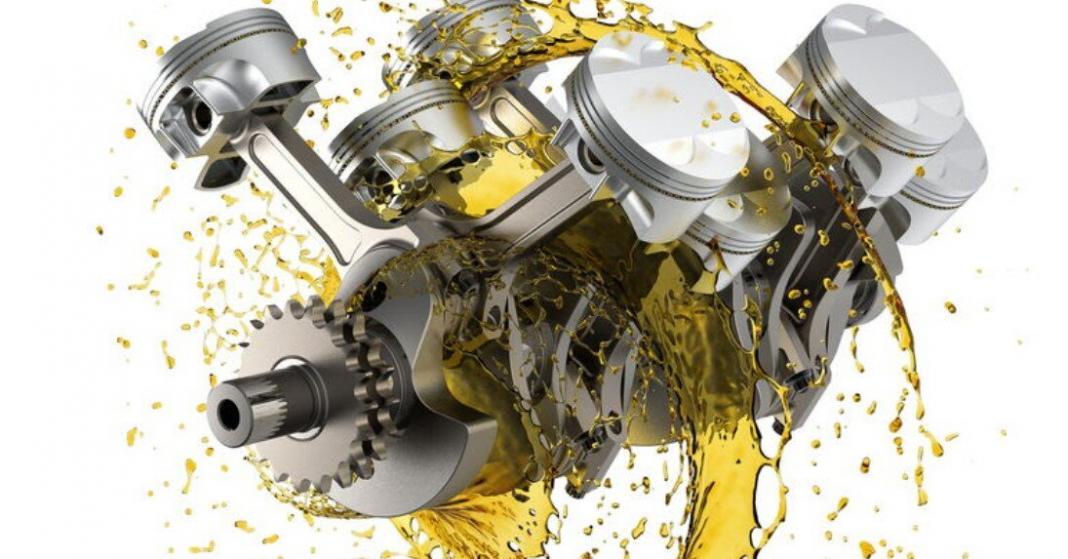When it comes to an automobile´s crankshaft, it is considered to be the largest part within the engine compartment. In fact, it goes without saying that a combustion engine is considered useless without a crankshaft. This means if there was no crankshaft, then there will also not be any way for the entire engineering process to take place, all the way from intake to exhaust.
However, not everybody knows the method for which a crankshaft performs in an engine. This is where we explain what a crankshaft is and how it works.
How Does a Crankshaft Function?
Originally the crankshaft was referred to as a handle that was used to crank a car´s engine. This cranking is what initially started the engine to make the car run.
Although there is no more need to hand crank an engine, the component within the engine is still referred to as the crankshaft.
Although an automobile´s crankshaft is rotating within an engine, it remains in place by way of the bearing journals holding it still.
Next, engine pistons are attached to rods that attach to rod bearing journals.
Each rod bearing journal is alternated so that each piston moves rhythmically in order to maintain engine balance as the car drives. Remember, the car´s crankshaft will be rotating fast so it has to remain as strong as possible at all times. However, there is more to the crankshaft than just that.
The front of a crankshaft houses a sprocket that is used to keep a car´s camshaft timed together with it. It is these parts that make a smooth running engine possible. This should be checked every time you have your car maintenance conducted.
How To Tell If You Have A Crankshaft Issue
In order for the crankshaft to function properly and efficiently, it is important that it remains lubricated at all times. This means having fresh oil at all times. If not, then the crankshaft could experience untimely wear, which may also make the car break down eventually.
How Does The Crankshaft Work?
The crankshaft relies on a crank system. With the use of cranks and crankpins, it is attached to the connecting rods. It makes use of a damper that helps to decrease vibrations as thrust gets increased.
With the use of counterweight, which lowers the crank´s load while bending.
For a 4-stroke engine, the following steps explain how the crankshaft works:
While the pistons in the engine progress through a stroke, the crankshaft receives the motion from the piston by way of a connecting rod.
The motion of the piston is then changed and becomes motion that is rotary and becomes transferred to a camshaft.
Upon receiving the motion, the camshaft then unlocks an inlet valve, which then permits air and fuel to mix in order for combustion to occur.
As the mixture of air and fuel fills the chamber, a piston is moved up and the mixture gets compressed. As compression continues, the valves for both intake and exhaust are closed within the camshaft. Once a compression cycle finishes, one crankshaft revolution is performed.
Once compression is finished, ignition then begins.
Because of so much heat produced by the mixture that is compressed, the piston is forced down by the ignition. When a stroke like this occurs, it is referred to as Power Strokes. As the piston is down, more transfer is conducted by the piston to the rod and it then gets received by the crankshaft.
On the crank´s end is the flywheel. When the motion of the piston is transferred to the crank, the flywheel receives the motion. The flywheel is then able to use this motion to drive the vehicle forward.
Following a power stroke, a piston continues its move down in order to release the exhaust. Throughout the power stroke cycle, the camshaft obtains the motion of the piston via the crank and makes the valve for exhaust open as the valve for intake is shut. The piston is then able to force all exhaust out.
Following a stroke of exhaust, the crank completes a couple of revolutions as well as a power cycle. After this, the cycle is repeated.
Is Restoration Possible for the Crankshaft?
It is not a good thing if a crankshaft fails, no matter what type of damage occurs. This means damage that is considered slight is able to cause bigger issues.
Most of the time when a journal receives an abrasion it can be restored to its original smoothness and have a bigger bearing placed, this will make up for any shavings stemming from the crankshaft restoration.
How Does A Crankshaft Fail?
A few things could happen, which can make the crankshaft fail. Below are a few of the most common ways:
Failure of the timing belt
This can occur when an accident occurs or normal wear is too much and damages the timing belt. If the timing belt snaps, it could damage the crank and cause other parts to become damaged. Because of the timing belt snapping, the sensor for the crank position may get hit. This will cause damage to the harness and sensor itself.
A Faulty Wiring Harness
A faulty wiring harness could occur by the wiring becoming loose, oil, dirt, or any other type of debris. When these happen, they could cause a faulty voltage to occur. When this happens, the crankshaft could easily fail. This is mainly because the oil or dirt causing a wiring harness to wear prematurely or decrease the amount of required voltage. This is what ultimately causes the sensor to fail completely.
Engine Overheats
When an engine overheats, it can affect the entire driveability of the vehicle. With overheating caused by the lubrication, poor ventilation, or radiator, the heat will increase and cause the sensor´s housing of the crankshaft to become extremely hot and possibly melt unless you use heat treatment Isonite to decrease it. When this happens, you will not be able to start the car. This is due to an interruption of data between the computer and the crankshaft sensor.
What Are Crankshafts Made Of?
Most crankshafts that are OEM are manufactured with cast steel or cast iron. The metal is melted and poured into casting, which will become the crank itself. Once cast it gets machined to become the end product. Having this method conducted will save money while also having many produced at once and being able to withstand the challenges it may face in the future.
What are the types of crankshafts?
Crankshafts are vital components of internal combustion engines, converting reciprocating motion into rotational motion. They come in various types based on their design, materials, and intended application. Here are some common types of crankshafts:
Cast Iron Crankshaft:
Data Point: According to a report by Research and Markets, the global cast iron market size was valued at $58.83 billion in 2020 and is projected to reach $68.56 billion by 2025, with automotive applications being one of the significant segments driving demand.
Application: Cast iron crankshafts are commonly used in automotive engines due to their durability and vibration dampening properties.
Forged Steel Crankshaft:
Data Point: A study by Grand View Research forecasts the global forged steel market to reach $9.8 billion by 2025, with the automotive sector being a key driver of demand.
Application: Forged steel crankshafts are widely used in high-performance engines, such as those found in racing cars and heavy-duty trucks, due to their strength and durability.
Billet Crankshaft:
Data Point: According to a report by Allied Market Research, the global automotive aftermarket size was valued at $378.4 billion in 2019 and is projected to reach $521.9 billion by 2027, with the performance aftermarket segment witnessing significant growth.
Application: Billet crankshafts are often used in aftermarket performance applications, where precise engineering and customization are required to meet specific performance goals.
Nitrided Crankshaft:
Data Point: A study published in the International Journal of Automotive Technology found that nitrided crankshafts exhibit improved wear resistance and fatigue strength compared to untreated crankshafts.
Application: Nitrided crankshafts are commonly used in diesel engines and other high-performance applications where durability and resistance to wear are essential.
Stroker Crankshaft:
Data Point: According to a report by MarketsandMarkets, the global automotive engine market size is expected to grow from $63.36 billion in 2020 to $75.31 billion by 2025, with the aftermarket segment witnessing significant growth.
Application: Stroker crankshafts are popular in aftermarket performance applications, where increasing engine displacement to improve torque and horsepower output is desired.
Crossplane Crankshaft:
Data Point: A study published in the International Journal of Automotive Technology discusses the benefits of crossplane crankshafts in V8 engines, including smoother engine operation and reduced torsional vibration.
Application: Crossplane crankshafts are commonly used in V8 engines, such as those found in sports cars, muscle cars, and trucks, due to their ability to evenly space out the firing order of cylinders.
Flatplane Crankshaft:
Data Point: According to a report by Allied Market Research, the global sports car market size was valued at $81.61 billion in 2019 and is projected to reach $113.71 billion by 2027, with performance and racing cars being significant segments.
Application: Flatplane crankshafts are often used in high-revving engines, such as those found in sports cars and race cars, due to their ability to reduce rotating mass and improve engine response.
Offset Crankshaft:
Data Point: A study by SAE International discusses the benefits of offset crankshafts in reducing piston side thrust and friction, resulting in improved engine efficiency and performance.
Application: Offset crankshafts are used in various engine applications, including automotive, marine, and industrial engines, where reducing friction and improving efficiency are important considerations.
What is the difference between a camshaft and a crankshaft?
The camshaft and crankshaft are both crucial components of an internal combustion engine, but they serve different functions and operate in distinct ways. Here’s a breakdown of the differences between them:
Function:
Camshaft: The camshaft is responsible for controlling the opening and closing of the engine’s intake and exhaust valves. It does this by rotating and actuating cam lobes, which push against valve lifters, rocker arms, or directly against the valves themselves.
Crankshaft: The crankshaft converts the reciprocating motion of the engine’s pistons into rotational motion, which drives the transmission and ultimately the wheels of the vehicle. It accomplishes this by connecting to the pistons via connecting rods and converting the up-and-down motion of the pistons into rotational motion.
Location:
Camshaft: Typically located in the cylinder head(s) of the engine, above the cylinders. In overhead cam (OHC) engines, the camshaft is positioned directly above the valves and is driven by a timing belt or chain.
Crankshaft: Located in the engine block, below the cylinders. It runs the length of the engine and is usually positioned parallel to the ground.
Shape and Structure:
Camshaft: Typically a long shaft with multiple cam lobes positioned along its length. The cam lobes have various shapes and sizes to control valve timing and lift.
Crankshaft: Usually a sturdy, cylindrical shaft with several offset crankpins along its length. The crankpins are connected to the connecting rods, which in turn are connected to the pistons.
Operation:
Camshaft: The camshaft rotates at half the speed of the crankshaft (in a four-stroke engine), and its rotation is synchronized with the crankshaft through timing gears, belts, or chains. As the camshaft rotates, the cam lobes actuate the valves according to the engine’s timing sequence.
Crankshaft: The crankshaft rotates continuously at the same speed as the engine’s RPM (revolutions per minute). It converts the linear motion of the pistons into rotational motion, which is transmitted to the transmission and ultimately to the wheels.
Featured Image: Source
Related posts:










